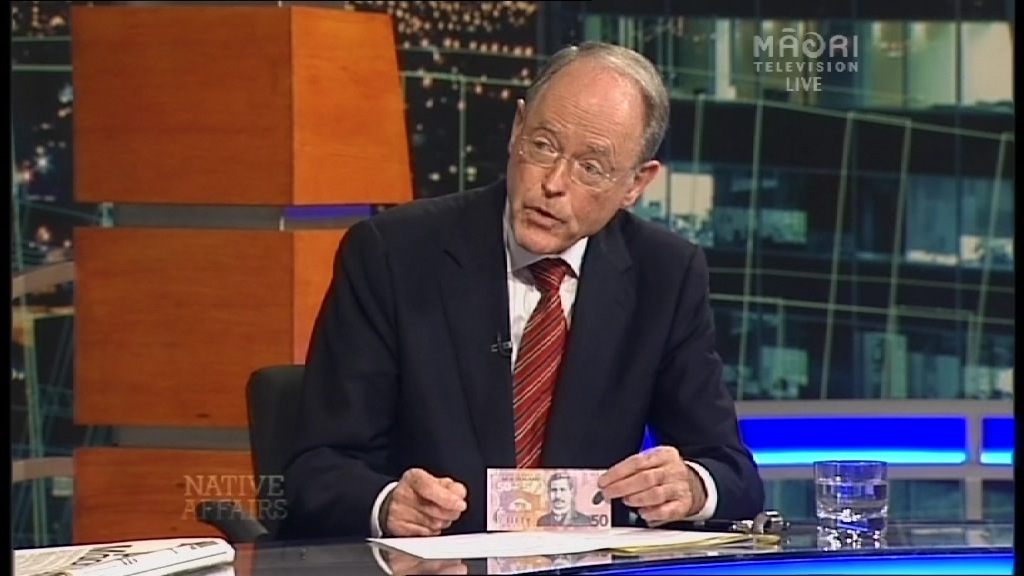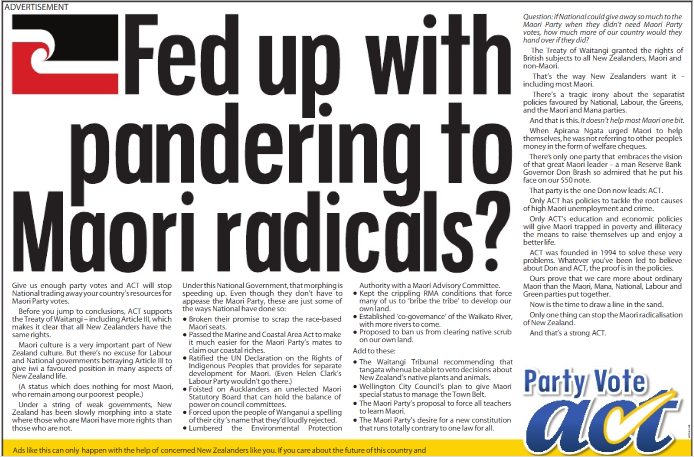The TPPA signing came and went, as did the nation-wide protests against it. I did not think that the government was going to be swayed from publicly commemorating what it considers to be the crown jewel of its trade-dominated foreign policy, but I had hoped that the numbers turning out to protest would add up to more than 100,000. At least that way the government could be put on notice that a sizeable portion of the electorate were unhappy about the surrender of sovereignty to corporate interests enshrined in the 6000 page text. Alas, the numbers assembled came nowhere close.
One interesting sidebar was the decision to stage a parallel protest at the Sky City complex  rather than join with the larger protest march down Queen Street. The specific objective of the Sky City protest was ostensibly to use so-called non-violent direct action (NVDA) and other acts of civil disobedience to block the streets surrounding the gambling complex. In the build up to signing (and protest) day the leaders of the two rival demonstrations publicly debated and largely disagreed on the merits of each. The Queen Street march organisers were concerned that any pushing and shoving at Sky City would feed into the government’s narrative that the matter was a law and order issue (following reports that the police had conducted riot control refresher training and door knocked activists warning them about the consequences of unruly acts). The leaders of the Sky City blockade argued that peaceful marches were simply ineffectual and were ignored by policy-makers. As it turns out, both were right.
The Sky City protesters, some of whom showed up in helmets and assorted face coverings, were forcibly prevented by the Police from effectively shutting down access to and from the venue and surrounding areas. The activists responded by engaging in a series of rolling blockades of major intersections, including the Cook Street on-ramp leading to the Harbour Bridge and Northern Motorway. This continued well after the signing ceremony was over and while the Queen Street march was still in progress. That had the effect of causing gridlock in the Auckland CBD.
Coincidentally or not, there was a bus strike that day. Although Auckland Council allowed its employees to work from home, many other entities did not. That meant that people who normally used buses to get to work had to use alternative transportation, including cars. That added to the number of cars on Auckland inner city roads at the time of the rolling blockades. Needless to say, motorists were not happy with the seemingly random temporary road closures in and around the CBD.
That is why things got too clever. As a tactical response to the police thwarting of the initial action, the move to rolling blockades was ingenious. But that bit of tactical ingenuity superseded the strategic objective, which was to draw attention to the extent of TPPA opposition. In fact, it appeared that the Sky City activists were trying to outdo each other in their attempts to make a point, but in doing so lost sight of the original point they were trying to make. After all, blocking people from leaving the city after the signing ceremony was over was not going to win over hearts and minds when it comes to opposing the TPPA. Plus, it displayed a callous disregard for the motorists affected. What if someone was rushing to a hospital to be with their badly injured child or terminally ill parent? What about those who needed to get to work on time so as to not be docked pay? What about cabbies and delivery people who earn their livings from their vehicles? None of this seems to have factored into the blockader’s minds. Instead, they seemed intent on proving to each other how committed they were to causing disruption regardless of consequence to others.
I have seen this before in other places, most recently in Greece, where anarchists and Trotskyites (in particular but not exclusively) infiltrate peaceful protests and engage in acts of violence in order to provoke what are known as “police riots” (a situation where isolated assaults on individual police officers eventually causes them to collectively lash out indiscriminately at protesters). Fortunately, NZ does not have the type of violent activist whose interest is in causing a police riot. Unfortunately, it has activists who seemingly are more interested in establishing and maintaining their street credentials as “radicals” or “militants” than using protest and civil disobedience as an effective counter-hegemonic tool. So what ended up happening was that the Sky City protestors were portrayed by the corporate media and authorities as anti-social misfits with no regard for others while the Queen Street march was briefly acknowledged, then forgotten.
On a more positive note, Jane Kelsey has to be congratulated for almost single-handedly re-defnining the terms of the debate about TPPA and keeping it in the public eye. As someone who walks the walk as well as talk the talk, she was one of the leaders of the Queen Street march and has comported herself with grace and dignity in the face of vicious smears by government officials and right wing pundits lacking half the integrity she has. I disagree about the concerns she and others have raised about secrecy during the negotiations, in part because I know from my reading and practical experience while working for the US government that all diplomatic negotiations, especially those that are complex and multi-state in nature, are conducted privately and only revealed (if at all) to the public upon completion of negotiations (if and when they are).
For example, the NZ public did not get to see the terms of the Wellington and Washington Agreements restoring NZ as a first-tier security partner of the US until after they were signed, and even today most of their content has been ignored by the press and no protests have occurred over the fact that such sensitive binding security arrangements were decided without public consultation. More specifically with regards to the TPPA, no public consultations were held in any of the 12 signatory states, and in the non-democratic regimes governing some of those states the full details have still not been released. Even so, I do think that it was a good opposition ploy to harp about “secrecy” as it simply does not smell right to those not versed in inter-state negotiations. In any event, what Ms. Kelsey did was exactly what public intellectuals should be doing more often–informing and influencing public opinion for the common good rather than in pursuit of financial or political favour.
I would suggest that opponents of the TPPA focus their attention on the Maori Party and its MPs. The Green Party’s opposition to TPPA is principled, NZ First’s opposition is in line with its economic nationalism and the Labour Party’s opposition is clearly tactical and opportunistic (at least among some of its leaders). So the question is how to wrestle votes away from the government side of the aisle when it comes to ratification. Peter Dunne and David Seymour are not going to be swayed to change sides, but the Maori Party are in a bit of an electoral predicament if they chose to once again side with the economic neo-colonialists in the National government.
For all the sitting down in the middle of public roadways, it may turn out that old fashioned hardball politicking may be the key to successfully stymying ratification of the TPPA in its present form.
Now THAT would be clever.


